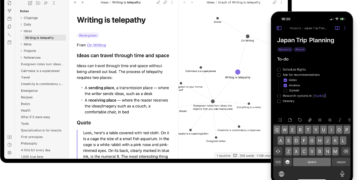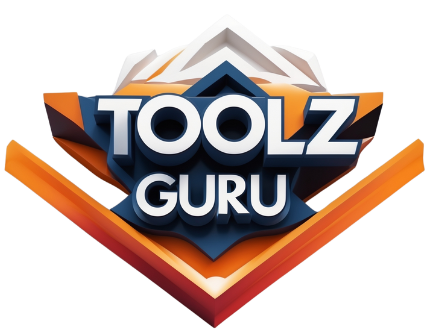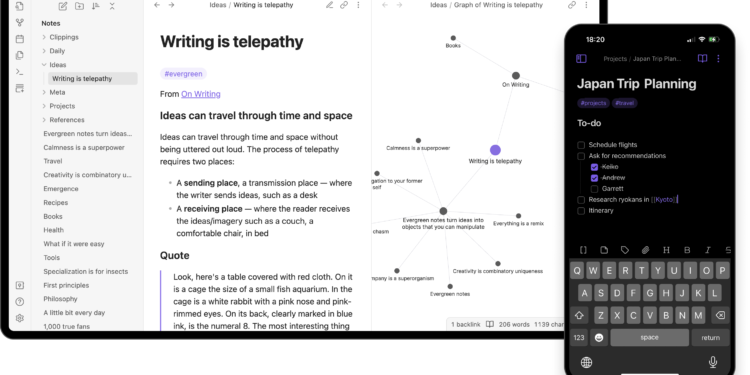Review of Obsidian
Obsidian has emerged as a powerful tool for managing knowledge and organizing ideas, particularly for users who leverage AI to enhance their workflows. This review explores how Obsidian integrates AI capabilities, its strengths, and areas where it could improve, making it a compelling choice for the AI-savvy audience.
Obsidian is a free, markdown-based note-taking app designed for flexibility and customization. Its core appeal lies in its ability to create interconnected notes through graph views, fostering a “second brain” system for personal knowledge management. While the interface can be challenging for beginners, advanced users appreciate its depth and adaptability4.
AI Integration in Obsidian
Obsidian’s integration with AI tools has transformed it into a dynamic platform for knowledge augmentation. By leveraging plugins like QuickAdd and Copilot, users can connect Obsidian with OpenAI’s GPT-3 and GPT-4 models to automate tasks and enhance creativity123. Here are some key AI features:
- Automated Writing Prompts: AI generates contextual prompts based on existing notes, eliminating the blank-page problem1.
- Summarization: Users can summarize book notes or other content using tailored templates, streamlining workflows1.
- Smart Connections: Plugins like Copilot automatically link related notes, creating a web of interconnected ideas akin to a personalized ChatGPT2.
- Local Models: For privacy-conscious users, local LLMs such as Starling 7B can be integrated with Obsidian via plugins like Ollama3.
These features make Obsidian an invaluable tool for creators, researchers, and professionals seeking to enhance productivity through AI.
Strengths for AI Users
- Customization: With thousands of plugins and an open API, Obsidian allows users to tailor their workflows extensively8.
- Cost Efficiency: While the app is free, OpenAI’s initial credits often suffice for basic AI-powered workflows, making it affordable2.
- Knowledge Augmentation: AI acts as an intellectual sparring partner, helping users refine their ideas and uncover new insights from existing content12.
Challenges and Limitations
- Learning Curve: The interface is not beginner-friendly, requiring time to master its features4.
- Privacy Concerns: Integrating cloud-based LLMs raises questions about data security. Local models mitigate this but require advanced hardware setups35.
- AI Dependency Risks: Over-reliance on AI could diminish personal engagement with content creation and learning processes35.
Ideal Use Cases
Obsidian excels in scenarios where structured thinking meets creative exploration:
- Academic research
- Content creation (e.g., books, blogs)
- Project management
- Personal knowledge systems
For AI enthusiasts, its ability to integrate cutting-edge tools while maintaining flexibility makes it a standout choice.
Conclusion
Obsidian is a robust platform that combines traditional note-taking with modern AI capabilities. Its adaptability caters well to advanced users who seek to harness AI for productivity while maintaining control over their workflows. Although it presents challenges like steep learning curves and privacy concerns, its strengths far outweigh these limitations for those willing to invest time in mastering the tool.
For the AI-driven target group, Obsidian represents the future of personal knowledge management—an indispensable ally in navigating complex ideas and projects.





















